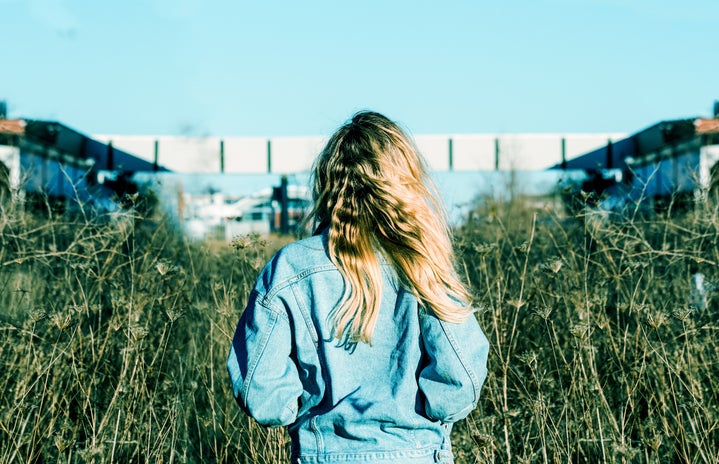When I first had the idea of writing this article, I planned to discuss the experiences I’ve had being a black girl with black girl hair. I planned to discuss the hours upon hours I’ve spent sitting at my mother’s feet while she combed, braided, twisted, treated, straightened and even at one point relaxed my hair. I planned to talk about the times I wore my hair naturally, and what those moments in my life represented. Lastly, I planned to discuss my continuing battle with my hair, and the fact that, whether I like it or not, my hair is a large part of my identity.
My hair is a reminder of my heritage, it plays a role in how I’m perceived in the world, and at the end of the day, my relationship with my hair is something that many people may not understand. That changed when I read about Pretoria High School in South Africa, where students were protesting the school’s newly enforced dress code, which banned braids, dreadlocks, and cornrows. A few weeks later, controversy arose surrounding Marc Jacobs’ decision to send primarily white models onto the runway with dreadlocks, which launched a debate over the meaning of cultural appropriation. With the occurrence of these incidents, it didn’t feel right for me to discuss my hair without bringing up the paradox of these two events occurring almost simultaneously. But before I give my take on these situations, let me give a little history on me and the relationship I’ve had with my hair.
A girl protesting at Pretoria Girls High in South Africa.
Up until about the 7th grade, I wore my hair in some form of braids or cornrows. Some of my earliest memories include my mom moisturizing my hair with butter or egg whites or olive oil before she initiated the seemingly endless washing process. I remember how much I dreaded getting my hair combed out, anticipating the knots that would inevitably form, causing both my mom and myself more grief. If I was lucky, one of my favorite shows would be on, but it didn’t really matter anyways since she would position my head in what seemed like every direction except that of the T.V. After the first thirty minutes or so, my feet would fall asleep from sitting cross-legged for too long. But two hours later, the last braid would finally be completed—my only consolation being the feeling of freshly done hair and the knowledge that I wouldn’t have to do it again for at least another week.
When I was about eight or so, I begged my mom to buy one of those boxed relaxers, and I remember feeling pure fascination when I touched my wet hair after a washing, and it wasn’t curly. Since that was the one and only time I got a relaxer, the effects didn’t last long. One night during the 7th grade, my mom was braiding my hair and found it extremely difficult. After that, I was finally fed up. I felt frustrated with the process and the time it took away from doing other things, so I vowed that the next chance I got, I would cut it all off. A few weeks later, I kept my promise and donated twelve inches of my own beautiful—yet difficult—hair to Locks of Love. I kept my hair short for a couple years, loving the convenience and little maintenance it brought. However, once I reached high school, I wanted to let my hair grow out again. But rather than going back to the braids of my childhood, I asked my mom to buy a flat iron—thus marking the start of my seven-year —and ongoing!—period of straightening my hair.
Regardless of the hairstyles that I’ve had and the ones that I currently choose to wear, I’m not here to discuss whether I think black girls should wear their hair naturally, buy weaves or wigs, put relaxers in their hair or keep it short. In fact, I’m here to talk about the exact opposite. It is my firm belief that my (or anybody else’s) opinion on how black girls should wear their hair is no one’s business. Which is exactly why it is so upsetting to hear about dress codes that tell girls like me that they’re not allowed to wear their hair a certain way. Because when I hear things like that, it’s no longer about limiting the styles I choose to wear—it becomes a much larger issue. Enforcing these rules essentially tells me that I cannot exist in this world unless I adhere to western society standards. While, yes, I do currently choose to straighten my hair, I don’t want to live in a world where I could be treated with less respect, suspended from school or even fired from a job because I decide to wear my naturally curly and kinky hair, or in simpler terms the hair that I was born with. I also believe that’s why there’s such outrage due to Marc Jacobs’ recent runway fiasco—he took something that is natural to me and made it unnatural. It’s ironic that in one part of the world, black girls are condemned for wearing their hair in braids or dreadlocks, but thousands of miles away, it is celebrated by a group of people who have no cultural association or understanding of the significance that these hairstyles represent.
For context: an image from Marc Jacobs’ now infamous runway show.
I’d imagine the argument over what defines cultural appropriation will continue long after I’m gone. Why that may be, is a discussion for another time. However, when it comes to my experiences and my journey with my hair, all I have to say is I wouldn’t have it any other way. Those times that I sat patiently on the floor while my mom braided, twisted or curled my hair brought us closer together. Those times when I wore my hair so short I’d be confused for a boy allowed me to realize that real beauty is more than skin-deep. Most importantly, I learned that my hair does not define me, no matter how much the world wants it to. For those individuals who still may not understand the intertwining and complex relationship between black girls and their hair—I’m not asking you to understand. All I ask is for you to respect it. Because once you’re able to respect it, you’ll be able to look at the style in which a black girl wears her hair as nothing more than a style, rather than a representation of her character.
Image credits: BET.com, NYmag.com

